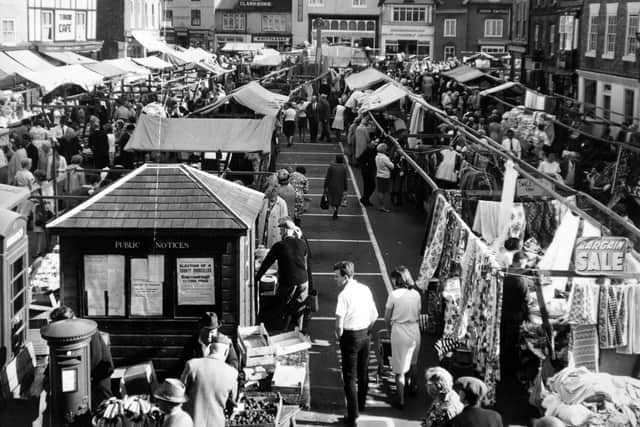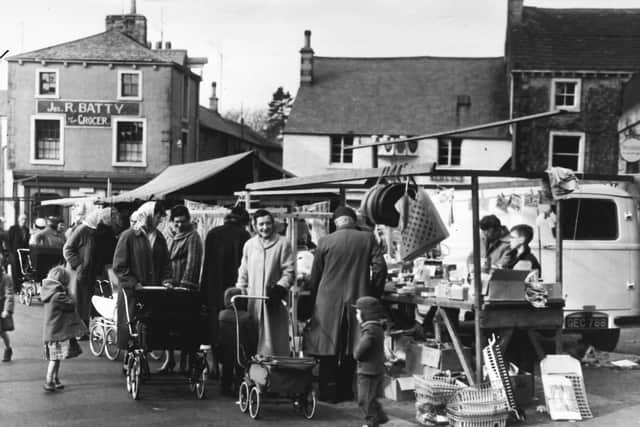How we used to shop: Rare pictures of Yorkshire’s old markets
This selection of rarely-seen pictures from the archive recalls a time before pocket calculators and debit cards, when no stall was complete without an Avery scale and a set of weights to measure the loose goods scooped out of bins for thrift-conscious shoppers. Wherever they went – Otley one day, York, Settle or Knaresborough the next – the scales went too.
A close-up examination of the pictures reveals what was on offer. Dishracks and tea towels, rubber mats and small toys were the staples of the 1950s, when not everything was yet off the ration.
Advertisement
Hide AdAdvertisement
Hide AdIn the background, the signs on the pubs and shops tell their own tale of the passing parade of life on the high street. The war was not long over when some of these pictures were taken, and the years of austerity had left the facades drab and unvarnished. Marketing was a science still of the future.


Market life had been a British tradition since the middle ages. But long before that, the Romans had established trading outposts in Colchester – England’s oldest recorded market town – and Cirencester. Later, markets became so much of a community hub that the rest of the town grew around them and gave rise to their name. Market Weighton in East Yorkshire is one such community.
The English system of charters held that a new market town could not be created within a certain distance of an existing one, but with the coming of mechanised transport, the distance shrank dramatically and in industrial centres such as Calderdale, West Yorkshire, whole clusters of market towns were established to take advantage of the new railway lines. Those in Halifax, Sowerby Bridge, Hebden Bridge, and Todmorden remain to this day.
Editor’s note: first and foremost - and rarely have I written down these words with more sincerity - I hope this finds you well.
Advertisement
Hide AdAdvertisement
Hide AdAlmost certainly you are here because you value the quality and the integrity of the journalism produced by The Yorkshire Post’s journalists - almost all of which live alongside you in Yorkshire, spending the wages they earn with Yorkshire businesses - who last year took this title to the industry watchdog’s Most Trusted Newspaper in Britain accolade.


And that is why I must make an urgent request of you: as advertising revenue declines, your support becomes evermore crucial to the maintenance of the journalistic standards expected of The Yorkshire Post. If you can, safely, please buy a paper or take up a subscription. We want to continue to make you proud of Yorkshire’s National Newspaper but we are going to need your help.
Postal subscription copies can be ordered by calling 0330 4030066 or by emailing [email protected]. Vouchers, to be exchanged at retail sales outlets - our newsagents need you, too - can be subscribed to by contacting subscriptions on 0330 1235950 or by visiting www.localsubsplus.co.uk where you should select The Yorkshire Post from the list of titles available.
If you want to help right now, download our tablet app from the App / Play Stores. Every contribution you make helps to provide this county with the best regional journalism in the country.
Sincerely. Thank you.
James Mitchinson, Editor
Comment Guidelines
National World encourages reader discussion on our stories. User feedback, insights and back-and-forth exchanges add a rich layer of context to reporting. Please review our Community Guidelines before commenting.